This article covers the basics of reloading for the 5.56 NATO (.223 Remington), including how to choose the right equipment, component explanations, and the prepping of brass for accepting a powder charge and slug.
*Reloading ammunition is a skill and an art. We suggest anyone interested in reloading train with a professional first.*
Scarcity of Ammunition
I have noticed a scarcity of .223 Remington rounds lately. Perhaps, the “guv’mint” is hoarding them. Perhaps, the ammo manufacturers are driving the prices up.
Maybe, after the last gun ban scare, households are buying it up as fast as it hits the shelves while they still can. (Smart move) Or, it may be that Santa Claus is coming and giving all the boys and girls that were good a brick of .223 to play with. (Still hoping here) Whatever the reason is, no matter where you find it, the price has gone WAAAAYYYY up since last year.
This cost prohibition, coupled with the fact that the .223 is the most common round used in survival firearms (read AR-15 and Mini 14) prompted me to ask the bosses’ permission to write about handloading them. They graciously granted permission, and here we are. We will divide this article into a three part series. Reloading is a tedious task, and to overload a person with too much information on their first batch would be asking for disaster.
I have personally seen the bolt of an M1 fly out of the receiver and stick in a man’s chest on the range due to improper reloading; he lived, but was in terrible shape for a while.
Component and Equipment Selection for Reloading
The first segment of this series on reloading will be about component and equipment selection, and brass preparation. Component selection is almost as important as the actual building of the round, but not NEAR as important as equipment selection. Remember, once you buy this equipment, YOU will be working with it! You must select it to fit YOUR needs.
Press Selection
The center piece of all reloading is the press. Press selection is divided into two types: Single stage and progressive. Single stage is slower, but as you ARE going slower, people tend to have a closer eye on quality control, and therefore, get better ammunition out of them.
Progressives are much faster, as once you get each stage loaded, a round flies out of it with EVERY pull of the lever! You only have to stop to resupply the components. My personal needs as a competitive shooter called for very consistent ammo.
Tight quality control is in order here, so I went with two single stage presses, and they have served me well over the years. I have often wished for a progressive for higher production, but I am satisfied with what I have.
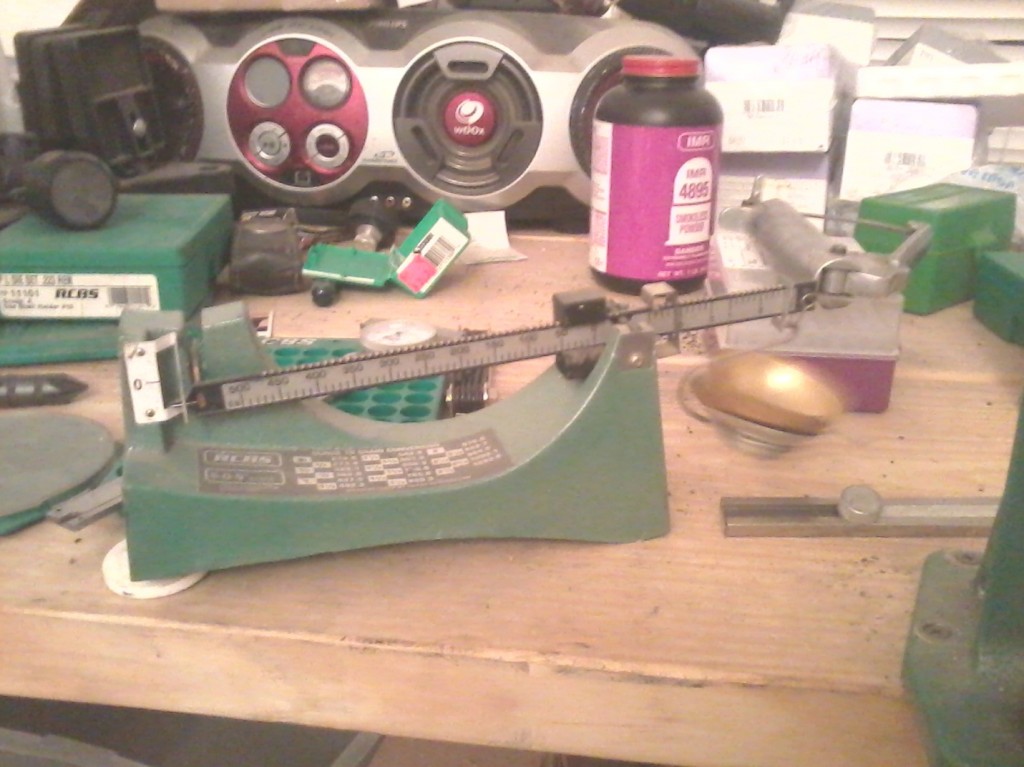 Choosing the Right Scale
Choosing the Right Scale
Next are scales, digital or balance type? I prefer the balance type, as there is less to go wrong in a survival situation.
No batteries to fool with, no interference from an EMP (Electromagnetic Pulse) and they can be used in the dark.
Brass Trimmers
Then, we have brass trimmers. Your brass will need to be periodically trimmed to ensure it doesn’t grow into the rifling and cause an over-pressure situation.
I have always used the manual type, once again the same pros and cons as the scale scenario. They make electric models, but in my opinion, they are useless in a survival situation when the grid is down.
Brass Tumblers
The consideration of brass tumblers must come into play somewhere in the conversation. I use the dry type myself, as they seem to be less messy.
However, the wet type seems to get the shells cleaner. Either is suitable for this application, as long as the brass gets cleaned.
Powder Measure
Powder measures are extremely effective in speeding up production; otherwise, you’re looking at using a trickler, which is very precise, but extremely slow.
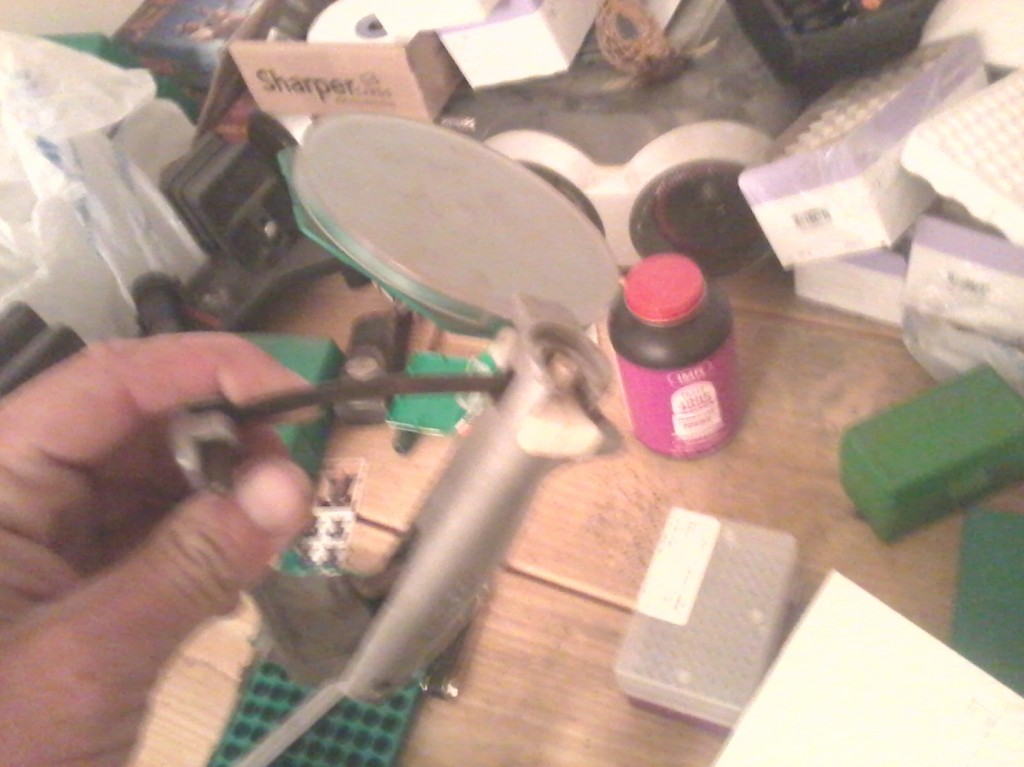 Capper
Capper
Now comes mention of the capper, this little jewel does the job of installing the primer without blowing your fingers off! I use a manual primer, it’s slow, but there are NO screw ups with this system.
Some presses offer an automatic primer, this is handy, but if loaded improperly, can install primers upside down. Sometimes it can ruin a primer by installing it sideways and crushing it.
Die Sets
Last and most important of the necessary equipment is the die set we will use to build our project. There are many manufacturers of die, some include a shell holder to help with the reloading process, and some do not. I cannot, in the interest of keeping honest and unbiased as an author, recommend a manufacturer, but I have had great luck with Lee and RCBS dies.
Don’t let all these decisions overload your mind! Many manufacturers have a starter kit that includes most of these items in it. And besides, we haven’t even begun to select our components, which consist of brass, primer, powder and slug.
Brass
Brass we will be using for our project will be just some old common junk we found at the firing range and picked up for use. As long as it isn’t damaged, brass can be used repeatedly!
It does eventually wear thin and have to be discarded, so looking for damage when reloading is paramount in brass preparation.
Brass can also be bought in a fired condition or brand new. Brand new being the most expensive, but you have to cull a lot less brass that way.
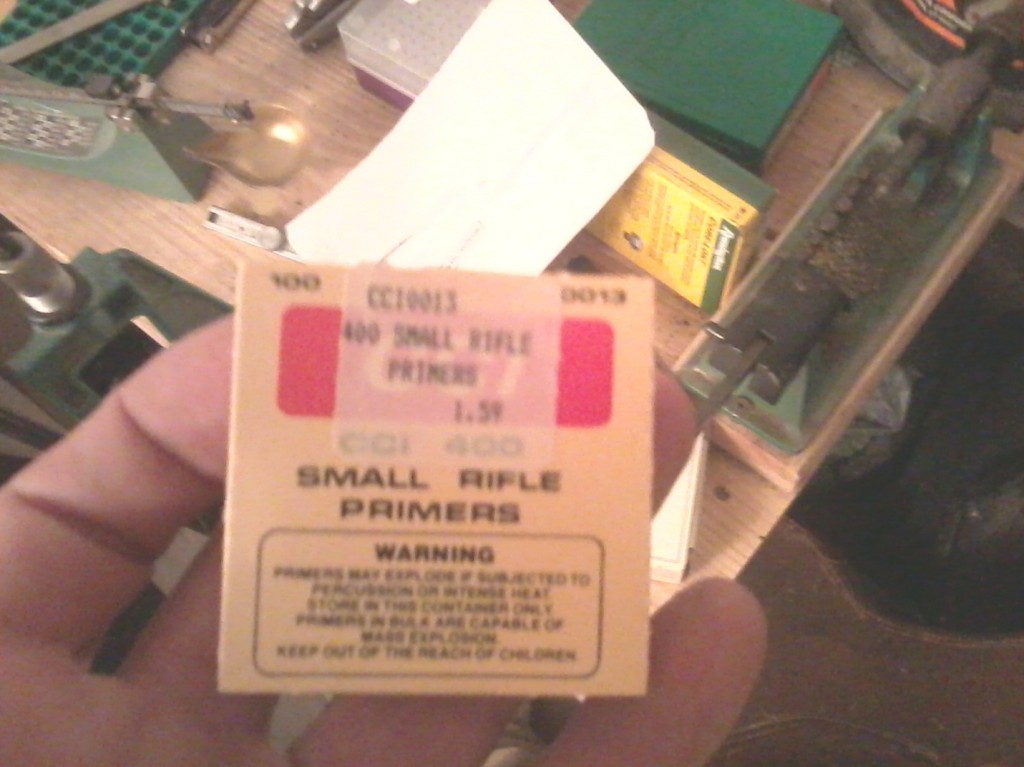 Primers
Primers
Primers are crucial to reloading. Primers perform the function of starting the whole firing process. Without a primer, we have no bang from our modern metallic cartridges.
Primer selection is subjective; I prefer the softer brass primers, as the harder steel primers require more force to fire. This is not a problem in a properly maintained firearm, but in a survival situation, firearm maintenance can be thrown to the wayside, so we eliminate that problem from the equation.
Powder
Powder is the next choice we must make. For our project, we will be using IMR 4895. I like this powder as it is readily available, cheap, and versatile. It is not the hottest powder made, nor the cleanest.
You can choose from several manufacturers, all one has to do is research online to find a manufacturer and powder to your liking.
Deciding on a Slug
Finally, the decision making is over….. or is it? We now have to decide on a slug. For our project I have selected a 69 grain hollow point boat tail from Sierra bullets (Sierra part number 1385), but the slug is designed for .223 caliber assault rifles specifically.
I will explain this later in the series, but many other selections are available. Most commonly found are Hornady, Sierra, Speer, and a host of others.
Consideration in slug selection must include use; different slugs have different flight characteristics, energy delivery, weights, shapes, and a mess of other considerations.
Brass Preparation
Now, on to the actual working parts. Brass preparation is definitely the most time consuming part of reloading. First, we take our tumbler, and the media of your choosing, and our brass. Mix them all up and let tumble for at least an hour. This cleans the brass and makes it easier to inspect. It also removes residue from the inside of the case.
After a good tumbling, inspection can take place. Look for cracks in the case, bulges, backed out primers, dents, or anything that you suspect might be abnormal. These are all warning signs of potential hazards down the road.
Re-sizing
Next, we go to our press, and screw in our re-sizing die. Remember to lube the cases before re-sizing! They will hang up in the die if you don’t! A light coat of lube is all that is needed and can be accomplished with either a lube pad or one of the various different spray on types.
If you over-lube, remove the excess, as it will cause a vacuum in the die and create dents in the case. It will literally suck a dent in the metal! This is a two for one process, as it re-sizes the brass and deprimes the little dude at the same time! Set your die deep enough to knock the primer out at the bottom of the stroke. It’ll fall out and land in the little bin at the bottom of the press.
Case Trimming
Next order of business, case trimming. We set our case trimmer for the proper length. For our .223 rounds there is a MAX case length and a trim length. Take your calipers and measure case length AFTER re-sizing. If it is greater than the MAX case length of 1.760” then it must be trimmed. If it is not trimmed, there is the potential of the case swelling up into the rifling between the barrel and the slug.
This will impede the slug’s progress down the barrel, thus increasing barrel pressure and causing a potential explosion in your face!! It is recommended to trim ALL cases to 1.750” but it is only required for those over 1.760”.
Deburring the Case
After trimming, we begin the process of deburring. This is the slow tedious part. You MUST deburr the case mouth….ALWAYS!! For two reasons: one, any little burr against the bullet can affect accuracy. A .223 is a relatively small bullet, and the smallest impedance can throw you off a LONG way down range.
The other is in fact, the very same reason we trimmed our case length…. preventing a dangerous over-pressure situation. Also, as an option, you can deburr the primer pocket too. This makes for more uniform ignition and consistent shooting.
It is not required, but recommended for both reliability (very important in a firefight situation) and accuracy (consistent ammo is accurate ammo.) After the deburring process has concluded, we re-prime the brass with our hand primer (primers used in our project load are CCI 400 primers).
This brings us to the conclusion of part one of the Reloading for the 5.56 NATO (.223 Remington) Tutorial series.

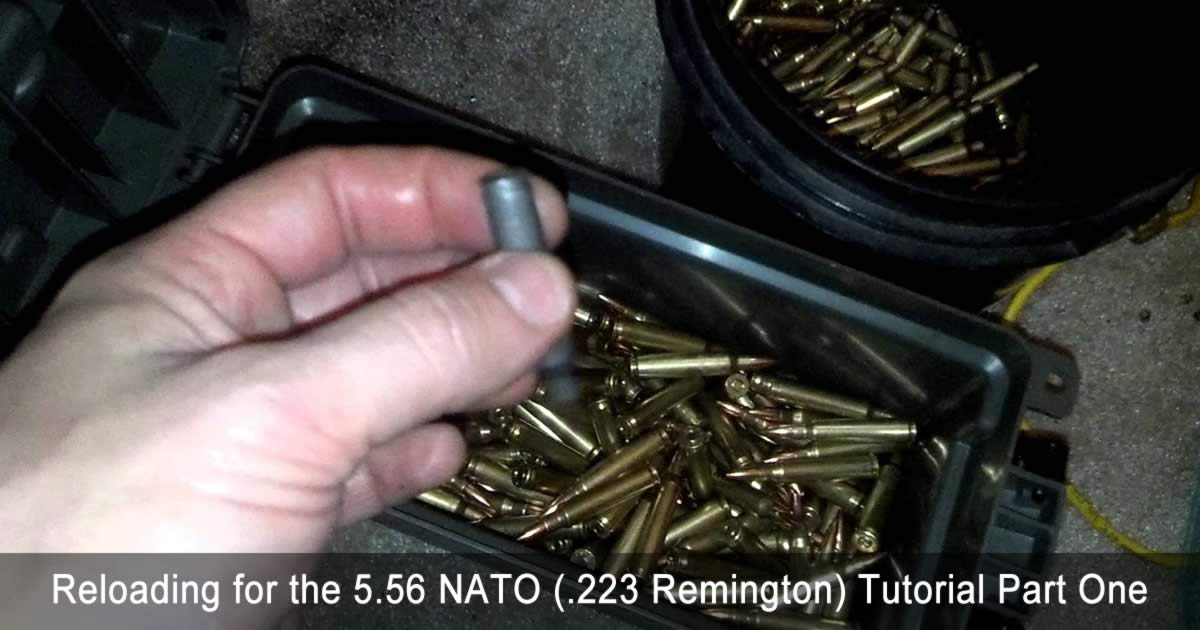
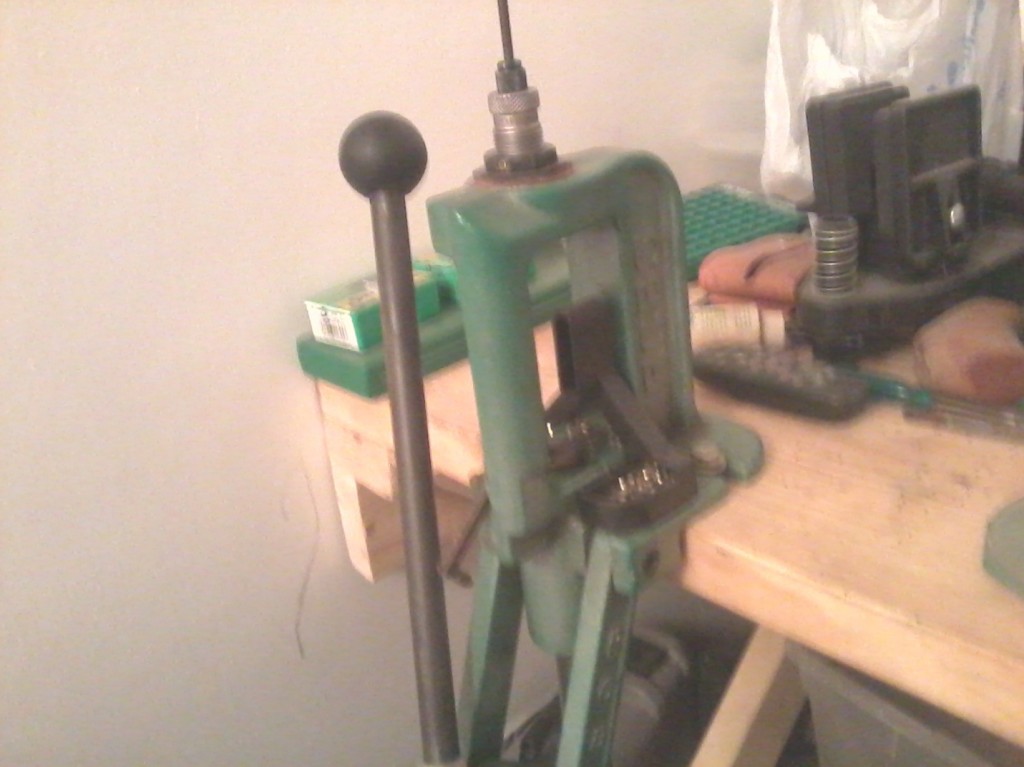
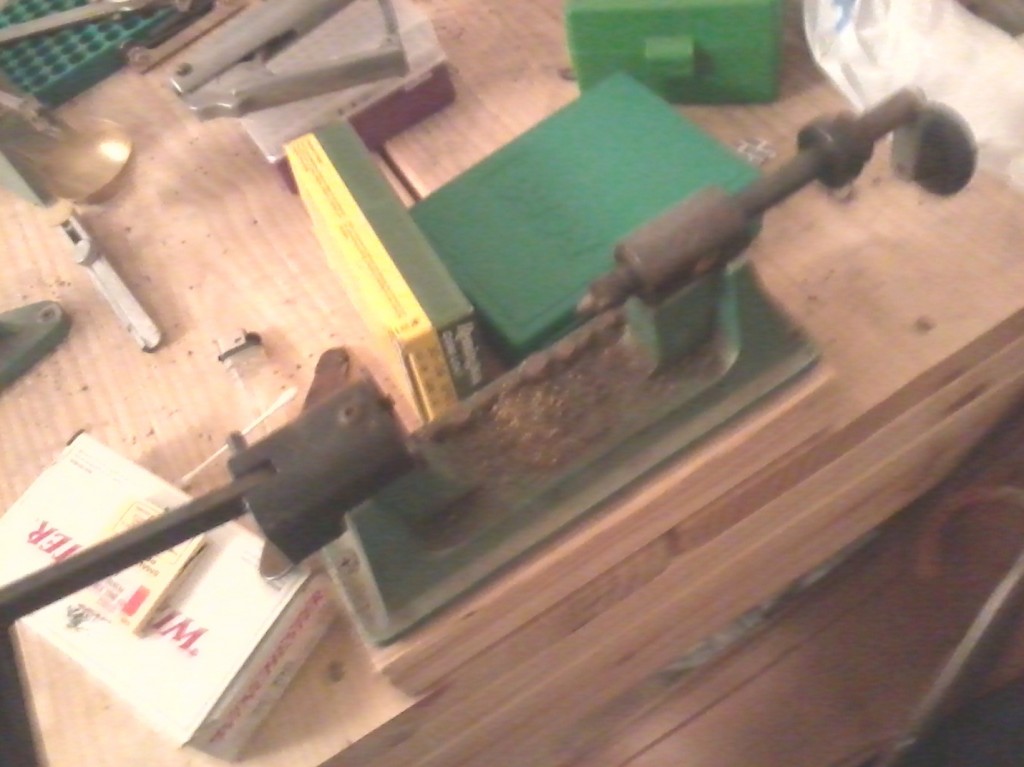
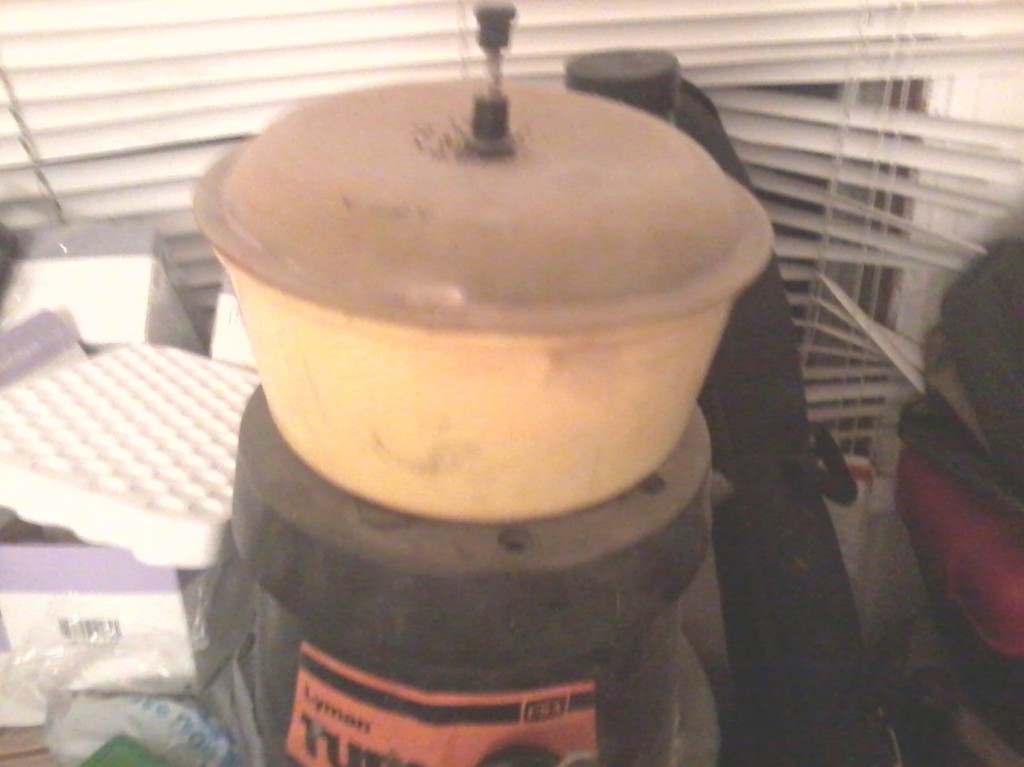
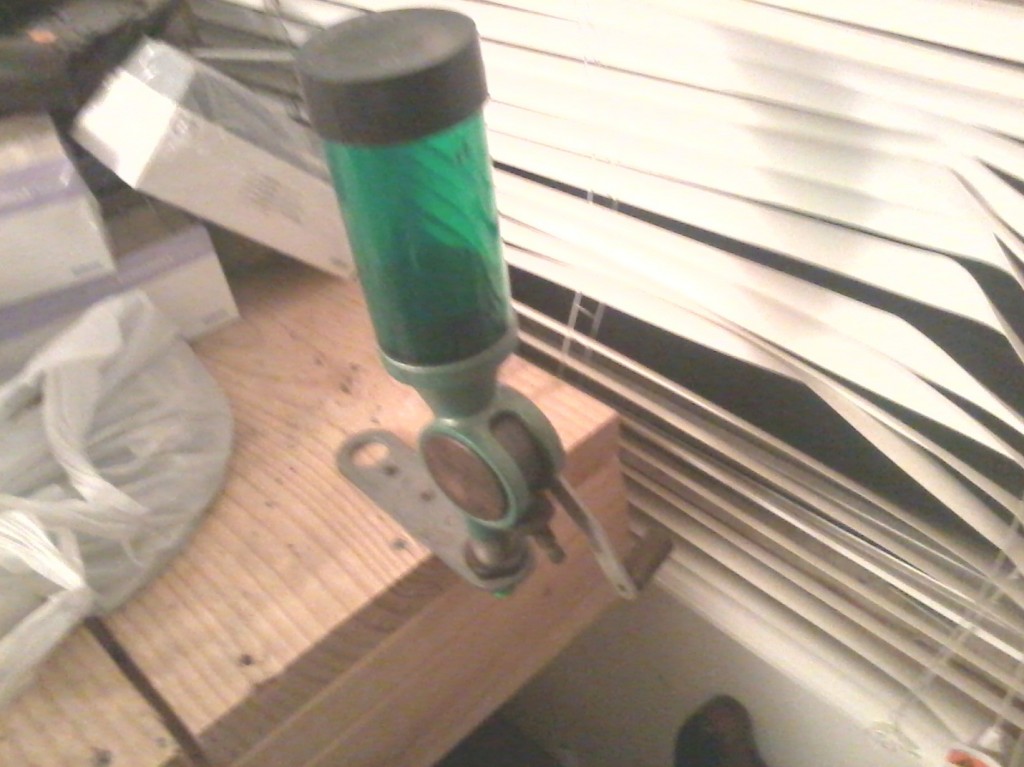
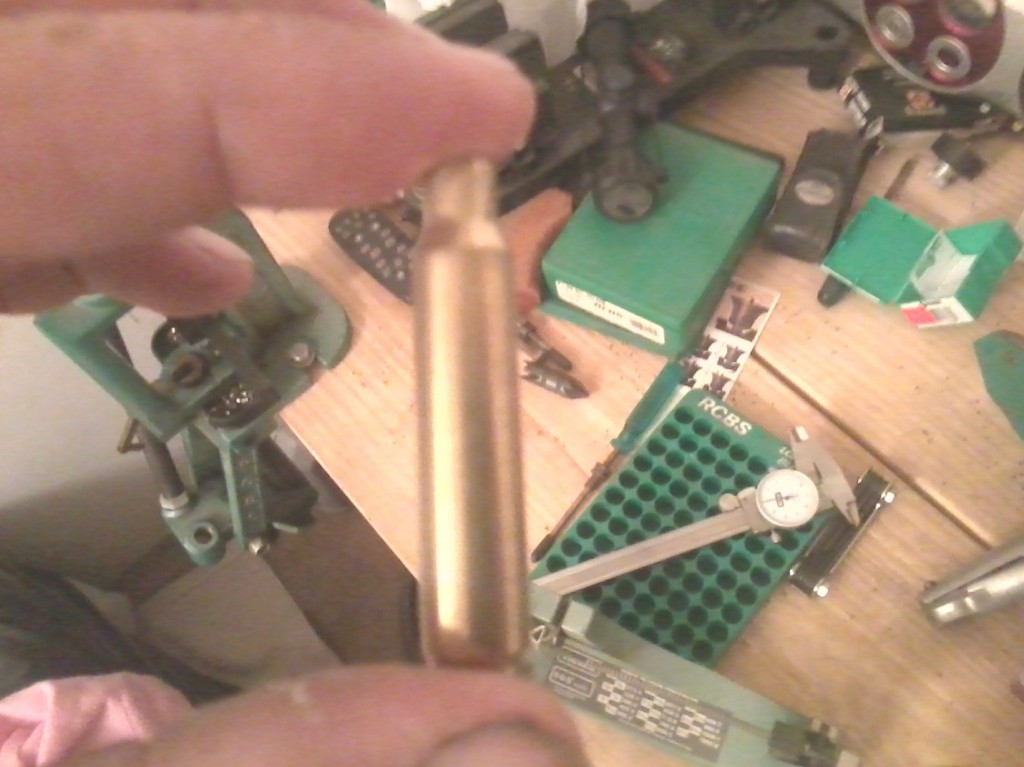
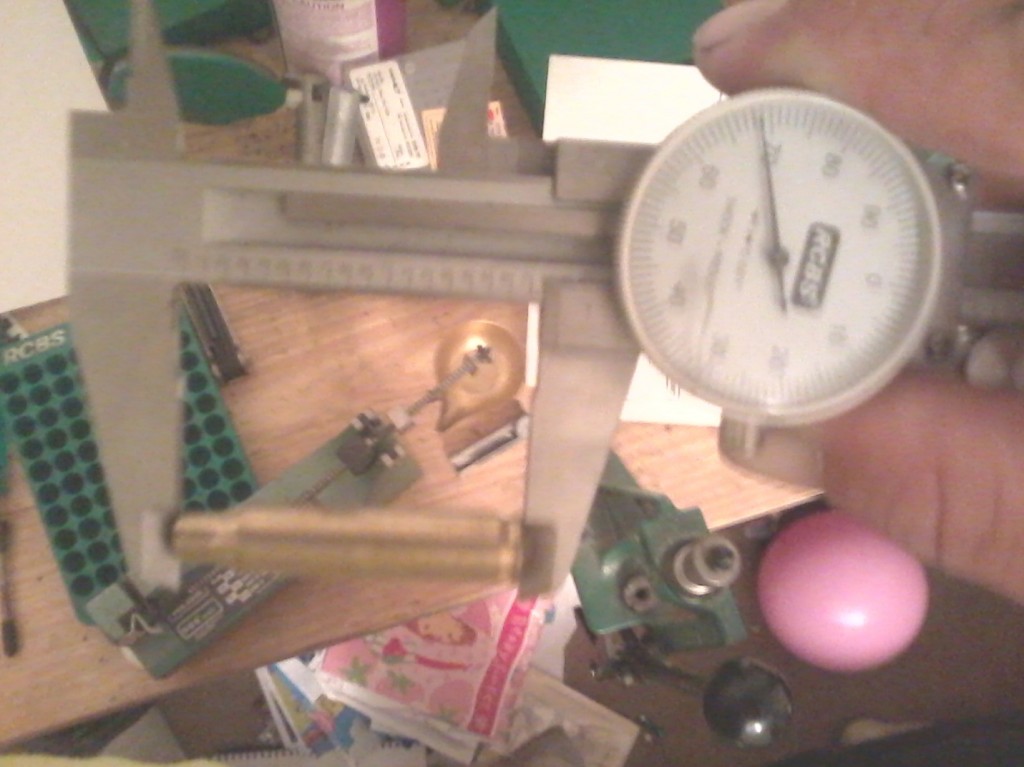
Great article. I have found that when you tumble your brass put a dryer sheet into the tumbler, the sheet will come out black. It helps keep your medium clean.
Awesome suggestion!
Brand new to reloading. I have an AR 15 that is chambered for 5.56/2.23. I see on PMC ammo web site, it says they have a 5.56 NATO and a 5.56. Knowing military brass has thicker walls does that mean two different cases as stated above are different? 5.56 NATO thicker case walls and the 5.56 regular thickness walls? If I put a 223 charge in military brass it will cause excessive pressure. I’m having problems finding loading data for 5.56. Not sure if there are 2 different 5.56 cases, regular and NATO (military).
Both the 5.56 and the .223 brass will work as a .223 round but you need to Google what is the difference between a 5.56 and a .223 round, you will find a lot of reading on the subject ok. Enjoy reloading and shooting your own ammo.
The ar15 is not by definition a assault rifle
Who here said it was?
The guy that wrote the article!
I almost quit reading after the smarmy self-laudatory introduction but decided to soldier on just in case there was some worthwhile information. The claim of seeing the bolt of an M1 (didn’t say Garand, but isn’t that the first thing that comes to mind when reading “M1″….whether rifle or carbine) fly out and penetrate a shooter’s chest? An M1 bolt? From an M1 receiver? Not from any that I carried during the Korea turmoil. But, I read on. The increasing bits of misinformation was sufficient impetus for me to skip to the end, where I saw more misinformation in reply to others’ commentaries. The wrong author and maybe the wrong topic for Survivalist.
I read the “assault Rifle” statement Too,…. but decided he may have used it in the correct context of turning a .223 into a combat cartridge,….
like using m855 Ammo/bullets,…. which BTW I choose a slower twist Rate simply for that weight range of bullet, and found that my wylde chambered 16″ ar platform, absolutely loved 62~75 grain m855 or hornady hpbt, lap (the heavier) {nothing like trying to figure out repeats},
My ar’s are for assault purposes anyway, Feral Hogs, javelina, Coyotes, Dogs Dumped by their owners, and anything else that molests my livestock, who’da thunk ? Ranching would turn out to be Range Day as a Necessary Side hobby ?,…. Depredation is a Semi-annual off season hunt around these parts Too, off season deer go to the children’s home after USDA approves the meat, Hogs too, Javelina if they want it,…. as for the article, I will defer till I turn out and burn a few hundred rounds “By the Numbers”
The term “AR” refers to the original manufacturer of the E. Stoner rifle ARMALITE. Therefor, AR is for “ArmaLite Rifle.” not the proverbial ASSAULT RIFLE term falsely used by Demonrat misinformationits.
Liberals go out of their way to say Assault Rifles only to scare the uninformed liberal democrats. I read a article earlier this morning stating Biden made the false statement of NATO 556 & 223 Remington explodes inside the body.
Thanks for info on reloading process for 556 & 223